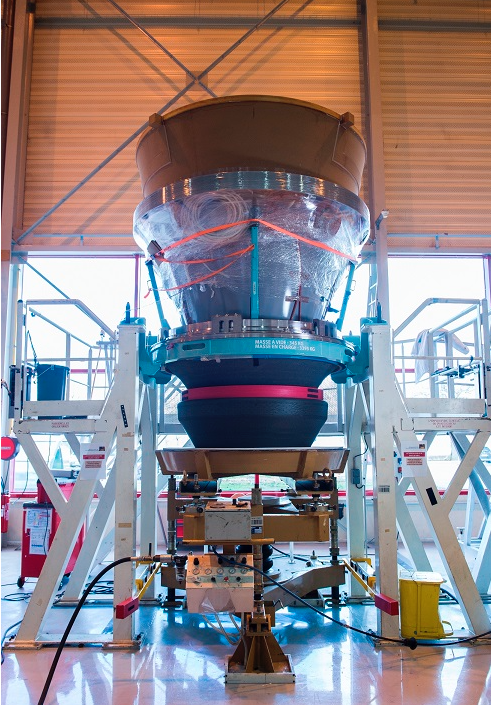
There are many types of nozzles such as one that fits on the end of a hose to put out fires, or to water gardens ... and then there is this giant nozzle that will fit on the P120 solid rocket motor that will contain 142 metric tons of solid propellant at launch, its lift-off thrust can reach 400 tons and the motor runs for 130 seconds.
The first nozzle of the P120 solid rocket motor common to the future European launchers has just left headed for the Guiana Space Centre in Kourou (French Guiana). It will be fitted to the body of the booster intended for the first firing test on the solid rocket booster test stand (BEAP).

This nozzle, which makes use of the most advanced solid fuel technologies, was designed by the ArianeGroup teams on the Le Haillan site near Bordeaux.
For Yves Traissac, head of solid fuel propulsion at ArianeGroup said that the P120 nozzle is a model of technological success and design to cost. It meets the exacting demands of the Ariane 6 and Vega-C programs. This achievement is the result of the experience acquired by their teams with the Ariane 5 and Vega programs. This new nozzle comprises a number of highly competitive innovations, such as a flexible pivot with composite reinforcements and transfer of elastomers, jet path parts made of a new carbon/carbon material, a composite divergent nozzle with industrial winding and fully automated assembly.
The P120 solid rocket motor is the heart of the process to rationalize the European launchers sector, because it will be used for the boosters powering both the future Ariane 62 (2 boosters) and Ariane 64 (4 boosters) as well as for the first stage of the Vega-C. Production of up to 35 per year is thus planned, allowing better use of space infrastructures on the European continent and in French Guiana.
The P120 contains 142 metric tons of solid propellant, its lift-off thrust can reach 400 tons and the motor runs for 130 seconds. The nozzle allows very high speed ejection of the very hot gases (3,000 degrees C) generated by the motor, thus creating thrust by transforming the energy of the combustion gases into kinetic energy. It can also pivot, which enables the launcher to be piloted. The technologies and materials used, including thermostructural (1) composites, are able to deal with these extreme conditions throughout the motor’s operating period. The nozzle contributes to meeting the goals of the Ariane 6 and Vega-C programs: optimized costs, shorter cycles owing to a simplified design and the use of innovative technologies and processes.
Once assembled, the P120 motor will be tested on the BEAP in Kourou during the summer of 2018. Two other test stand firings will follow to qualify this motor before the flights of Vega-C in 2019 and Ariane 6 in 2020.
(1) Thermostructural: composite materials with excellent mechanical properties at very high temperature.

